NQF Releases Opioids and Opioid Use Disorder: Quality Measurement Priorities
The National Quality Forum (NQF) this week released Opioids and Opioid Use Disorder: Quality Measurement Priorities, a 105-page report that examines issues related to acute and chronic pain management and substance use disorders (SUD).
The report’s findings answer two questions: “What are the priority gaps in Quality Measurement (QM) science that need to be filled in order to reduce opioid use disorders (OUD) and opioid overdose deaths without undermining effective pain management?” and “What existing and conceptual measures should be deployed in the following types of federal medical payment programs to best address the opioid crisis moving forward: Merit-Based Incentive Payment System (MIPS), alternative payment models (APMs), the Medicare Shared Savings Program (SSP), the Hospital Inpatient Quality Reporting Program (IQR), and the Hospital Value-Based Purchasing Program (VBP)?”
A 28-member Technical Assistance Panel, or TEP, composed of physicians, nurses, patients, pharmacists, and others with experience in pain management and OUD explored these questions. The TEP took a list of 32 priority gaps, prioritized those to a “top 15” list, and then further reduced that list to five priority gaps (see page 16 of the report).
Included among the top five priority gaps were: short-term transition between inpatient and outpatient settings, and long-term follow-up of clients being treated for OUD across time and providers is important to assess even though data challenges exists, and pain management, OUD treatment, SUD treatment, and treatment of physical and mental health comorbidities are all important.
“Ultimately, the guidance proffered here aims to achieve the application of the proper healthcare quality metrics across the U.S. healthcare system,” the report said. “Using the best metrics, in turn, aims both to continue to reduce opioid deaths verifiably, to encourage the implementation of best practices of pain management, to decrease the incidence of other SUDs, and to decrease illegal drug use by those unable to obtain prescription pain medication.”
SAMHSA Clarifies Mental Health Block Grants to Mental Health Commissioners
The Substance Abuse and Mental Health Services Administration (SAMHSA) has sent a letter to the nation’s mental health commissioners to clarify that Community Mental Health Services Block Grant (MHBG) funds can be used to treat people with serious mental illness who have interactions with the criminal justice system, including incarceration or pending criminal cases.
The letter notes that the service providers for which MHBG funds can be used include community-based mental health centers, child mental health programs, psychosocial rehabilitation programs, mental/peer support services, and mental health primary consumer-directed programs.
“Further, funding may be used to screen individuals who may be in need of state hospital services for psychiatric care,” wrote Assistant Secretary for Mental Health and Substance Use Elinore McCance-Katz, who also added a list of services for which funds may not be used, including inpatient care.
“It is imperative that MHBG funds to the states be used to serve those in greatest need—the most vulnerable Americans with serious mental illness,” McCance-Katz wrote. “Jails and prisons for too long have been de facto mental health facilities, in part, because of a misunderstanding of how the mental health block grant funds can be used.”
SAMHSA Announces Pilot for Treatment for Pregnant and Postpartum Women
SAMHSA said it expects to issue up to five grants of up to $900,000 for up to three years for a pilot program that would provide treatment for pregnant and postpartum women.
According to the announcement, the funds are designed to support family based services for pregnant and postpartum women with a primary diagnosis of a substance use disorder, including opioid use disorders; help substance abuse agencies address the continuum of care, including services provided to women in nonresidential-based settings; and promote a coordinated, effective, and efficient state system that state substance abuse agencies would manage.
SAMHSA will accept applications through Monday, April 20. Click here to learn more and apply.
Visit Our Exhibitors and Sponsors at the 2020 Annual Meeting!
NABH appreciates the generous support of our Annual Meeting Exhibitors and Sponsors, whose valuable products and services help NABH members delivery quality behavioral healthcare every day to those who need it.
Please be sure to visit our Chairman, President, and Executive Exhibitors, and our Platinum and Gold Sponsors at the 2020 Annual Meeting at the Mandarin Oriental Washington, DC from March 16-18. Before then, view a complete list of our Exhibitors and Sponsors and review our Preliminary Program to find the best time to visit with them.
We look forward to seeing you next month in Washington!
Fact of the Week
The opioid crisis has been responsible for more than 400,000 deaths since 2000 and cost an estimated $665 billion in 2018.
For questions or comments about this CEO Update, please contact Jessica Zigmond

